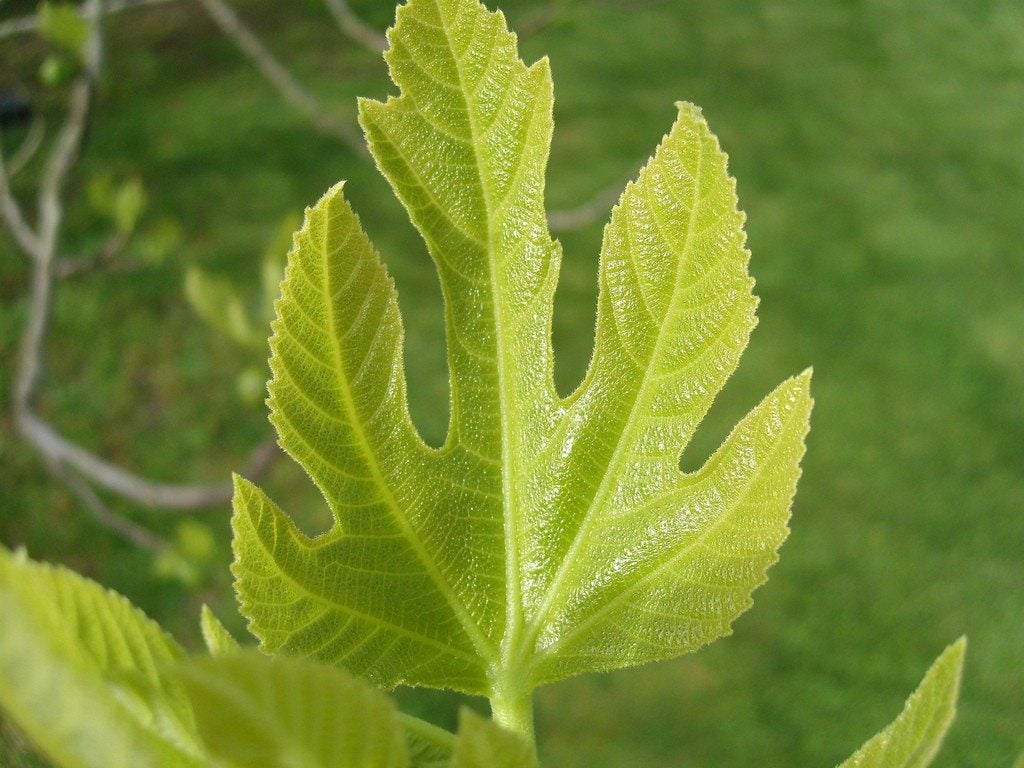Problems With Fig Trees: Common Fig Tree Diseases


You can't have a proper Newton without them, but figs in the garden aren't for the faint of heart. As rewarding as they are frustrating, figs are commonly troubled by several fungal diseases, as well as the odd bacteria or virus. Knowing how to recognize fig tree diseases can help keep you one step ahead of garden disaster. Let's learn more about some of the most common fig issues affecting these fruit trees.
Major Fungal Diseases of Fig Trees
Of the pathogens that cause problems with fig trees, fungi take the cake. Fig disease problems caused by fungi can affect nearly any part of the plant, including fruits, leaves, and internal tissues. There is little that can be done once some fungal infections are in full force, so always practice good sanitation and beware of how much you're watering your fig to reduce favorable conditions for fungal germination.
- Fig Rust - This fungus causes leaves to turn yellow-brown and drop in late summer or early fall. When the leaves are examined, many rust colored spots are visible on the underside of the leaf. Although not generally fatal, perennial attacks from fig rust can weaken your plant. Neem oil may destroy an early rust infestation, but removing fallen debris will often prevent fig rust from taking root.
- Leaf Blight - Pellicularia kolerga (leaf blight) is another fungus that attacks leaves, though it causes spots that start yellow and appear water-soaked. As the disease progresses, water-soaked areas spread and dry out, leaving a papery surface behind. Thin holes may tear out of affected leaves, or the entire leaf may brown and die, with a web-like mat of fungal bodies clinging to the underside. Sanitation is the only control-- remove these leaves as infection becomes apparent and keep infected debris off the ground.
- Pink Blight - Certainly the most colorful of the common fig issues, pink blight often affects the interior of overgrown figs, appearing as a pink to white, velvety coating on sickly or dead branches. The fungus can spread from these dying tissues into healthy ones, destroying whole trees if left untreated. Cut out diseased tissues and destroy them immediately and open the inside of your fig by thinning out up to a third of the smaller growth, creating plenty of space for air circulation.
Other Diseases of Fig Trees
Although fungal pathogens are by far the most prevalent fig tree diseases, other pathogens have their parts to play. Difficult-to-manage problems like fig mosaic, fruit souring, and root knot nematodes can be heartbreaking for a fig-keeper to encounter.
- Fig Mosaic - The virus responsible for fig mosaic is thought to be vectored by the eriophyid mite Aceria fici and multiplied through cuttings. Yellow spots appear on leaves of infected trees, though they may not be on every leaf or evenly distributed. As the season continues, these spots develop rust colored bands. Fruits may be spotted, stunted, or drop prematurely. Unfortunately, there's no cure for fig mosaic once your plant is symptomatic-- it should be destroyed to prevent further spread.
- Fruit Souring - A variety of yeasts cause figs to sour while on the tree, believed to be introduced by vinegar flies or dried fruit beetles. As figs begin to ripen, they may ooze or form bubbles and smell like fermentation. Insect control may prevent infection, but unless you plant fig varieties with closed ostioles, such as Celeste, Texas Everbearing, or Alma, your fruit will be at risk each season.
- Root Knot Nematodes - These very common, invisible roundworms cause damage that can be difficult to diagnose, often mimicking other root diseases. Trees infected with root knot nematodes show a gradual decline, have chronically poor health, and aren't as vigorous when developing leaves and fruits. Digging a few roots will reveal swollen galls that ultimately block the root system, causing the death of the fig. Root knot nematodes are difficult or impossible to kill, since they protect themselves with the plant's own tissues.
Keeping a close eye on your fig tree will prevent fig disease problems in the future.
Gardening tips, videos, info and more delivered right to your inbox!
Sign up for the Gardening Know How newsletter today and receive a free copy of our e-book "How to Grow Delicious Tomatoes".

Kathee Mierzejewski was with Gardening Know How in the very beginning, writing many of the site's foundational articles.
-
 Looking For Plants To Give You The Soft And Fuzzies? Try These 5 Fuzzy Leaf Plant Options
Looking For Plants To Give You The Soft And Fuzzies? Try These 5 Fuzzy Leaf Plant OptionsLovers of texture, drama, silver foliage and tactile plants will adore these special sensory garden additions. These fuzzy leaf plant options will leave you all aglow
By Susan Albert
-
 Get Ready For A Summer Of Hummers! Grow These Full Sun Hummingbird Plants and Flowers
Get Ready For A Summer Of Hummers! Grow These Full Sun Hummingbird Plants and FlowersIf you’re lucky enough to enjoy a sunny backyard, make sure you are maxing out on your pollinator opportunities and grow these full sun hummingbird plants and flowers
By Tonya Barnett